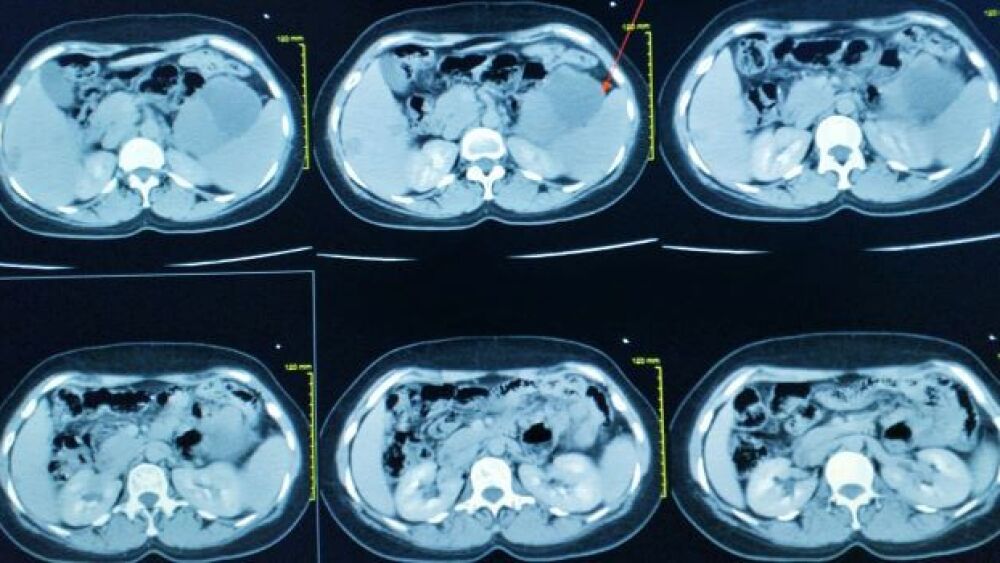Researchers at MD Anderson Cancer Center have uncovered a new method in which some solid tumor cells are evading detection: the formation of their own type of collagen.
Cancer cells can be elusive, adapting different manners to hide from the body’s immune system. Researchers at MD Anderson Cancer Center have uncovered a new method in which some solid tumor cells are evading detection: the formation of their own type of collagen.
Collagen is the most abundant protein in the human body, and some cancers have found a way to incorporate that into their own defensive systems. In an interview with BioSpace, Raghu Kalluri, chair of Cancer Biology and director of operations for the James P. Allison Institute at The University of Texas MD Anderson Cancer Center, likened the cancer-developed collagen to the cloaking device used by the Romulans in Star Trek.
“They don’t go invisible like the Romulans, it just prevents the immune system from getting to them (cancer cells),” Kalluri explained. “It’s really fascinating. This collagen behaves differently than the rest of the collagen in your body. It’s a fascinating discovery of how cancer cells protect themselves.”
A Brand New Therapeutic Target
Kalluri said the collagen made by these cancer cells, particularly pancreatic cancer cells, provides a form of protection from the body’s immune responses such as T cells and also creates a favorable microbiome that allows the mutated cells to survive. Although the cancer cell-created collagen provides a form of protection for the disease, Kalluri said it also provides a target for drug developers. If the collagen, which is different than the rest of the collagen in the body, is targeted, that could allow the body’s immune system to take out the cancer cells.
Typical collagen produced by fibroblasts in the body consists of two α1 chains and one α2 chain. Kalluri said this formulation forms a triple-helix structure.
The MD Anderson researchers’ findings showed that the collagen produced in pancreatic cancer cell lines expressed only the α1 gene, with the cancer cells somehow suppressing the α2 chain through epigenetic hypermethylation. This resulted in a “homotrimer” made up of three α1 chains, Kalluri said. The findings from Kalluri and his team were published Thursday in the journal Cancer Cell.
“Uncovering and understanding this unique adaptation can help us target more specific treatments to combat these effects,” he said. “No other cell in the normal human body makes this unique collagen, so it offers tremendous potential for the development of highly specific therapies that may improve patient responses to treatment.”
With this discovery in hand, Kalluri said the next steps are to understand why the cancer cells are doing this and come up with drug strategies to address this unique discovery. He speculated that the collagen in pancreatic cancer cells could be one of the reasons why this disease is typically discovered later than other cancers, which leads to a poor prognosis.
Finding the “Why” in Pancreatic Cancer
While the current study looked specifically at pancreatic cancer, Kalluri noted that collagen homotrimers also are seen in other cancer types, including lung and colon cancers. He said the team did not look at hematological cancers.
Pancreatic cancer is a highly fatal disease, with a five-year survival rate of 11.5%, according to the National Cancer Institute. It is estimated that more than 62,000 people will be diagnosed with this disease in 2022 and nearly 50,000 people in the U.S. will die from pancreatic cancer this year.
“We are trying to ask this question of why? We’re trying to understand what’s unique about it (the collagen) and how we can exploit it,” Kalluri said.
The loss of cancer-specific collagen reduces cancer progression and could boost anti-tumor immune response, he said. Kalluri added that MD Anderson is well-equipped with the means to further investigate the discovery, as well as examine particular drug-related responses.
To further investigate the real-world effects of this discovery, Kalluri’s team created knockout mouse models of pancreatic cancer. The unique “homotrimer” was deleted in the cancer cells. When this occurred, Kalluri said the loss of the homotrimer reduced the cancer cell’s ability to proliferate and also reprogrammed the tumor microbiome.
The MD Anderson team noted that this led to lower immunosuppression, which was associated with increased T cell infiltration and elimination of cancer cells. The team further discovered that these knockout mice models responded more favorably to treatment with anti-PD1 immunotherapy, which suggests that targeting this cancer-specific collagen could help boost an anti-tumor immune response. The loss of the cancer-specific collagen increased levels of CXCL16, a small cytokine, which attracts T cells.
The team also examined the microbiome of the cancer cells in the mouse models due to the relationship between the gut and tumor microbiomes and immune responses. Kalluri said his team discovered that the loss of the cancer-formed collagen led to changes in the bacterial composition within the tumor. They saw a corresponding decrease in myeloid-derived suppressor cells and, at the same time, an increase in T cells, which contributed to favorable survival outcomes.
“This discovery illustrates the importance of mouse models, as it was only when we noticed a difference in their survival that we found this abnormal collagen variant existed and was produced specifically by the cancer cells,” Kalluri said. “Because it is generated in such small amounts relative to normal collagen, the homotrimer would have otherwise gone undetected without specific tools to differentiate them.”





